The Complexities of Fish and Game Management
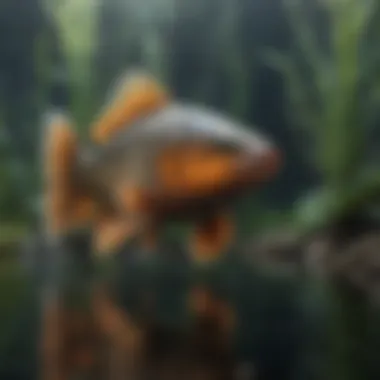
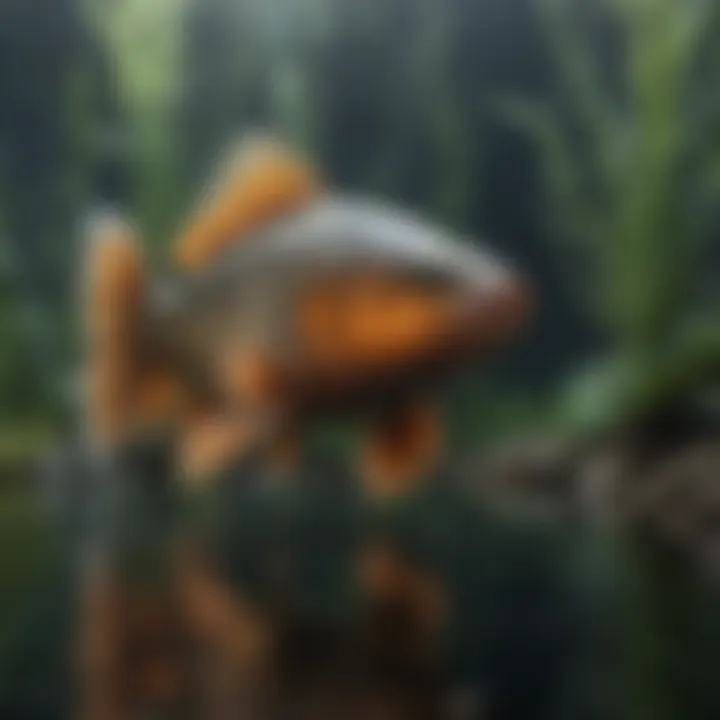
Overview of the Topic
Fish and game management sits at the crossroads of ecology, economics, and community interests. This intricate field seeks to balance the needs of wildlife populations with those of human stakeholders, integrating principles of sustainability and conservation. From the vast forests that shelter deer to the shimmering lakes teeming with fish, the landscapes are as diverse as the species inhabiting them.
The significance of effective fish and game management spans beyond mere preservation; it tackles the profound question of how to coexist responsibly with nature. In an age of rapid environmental change, understanding this relationship has never been more critical. Species face habitat loss,, climate impact, and over-exploitation, necessitating careful stewardship to ensure the survival of both wildlife and our natural heritage.
Current Status and Challenges
At present, the state of fish and game populations showcases a complex tapestry of successes and challenges. Some species, like the whitetail deer and wild turkey, have rebounded due to successful management initiatives and licensing regulations. In contrast, other populations, such as certain fish species and iconic game birds, suffer from declining numbers largely due to habitat degradation and climate change effects.
The challenges are manifold:
- Overfishing and illegal hunting threaten some fish and game populations.
- Habitat loss due to urban development and agriculture continues to encroach on wildlife.
- Climate change disrupts breeding patterns and food availability.
- The socio-economic factors often create tension between conservation goals and community livelihoods.
These challenges can make managing these resources feel like threading a needle during a hurricane.
Sustainable Solutions
Finding solutions isn’t just about implementing regulations; it’s about fostering a culture of sustainability. Several practices have emerged that can make a difference:
- Adaptive Management: A flexible approach allows managers to respond quickly to changing conditions, such as population fluctuations and habitat alterations.
- Community Engagement: Involving local communities in the decision-making process helps ensure policies are acceptable and beneficial.
- Conservation Areas: Establishing protected regions helps maintain critical habitats while allowing ecotourism to flourish.
Successful examples include the collaborative efforts seen in the restoration of the American alligator population, which has rebounded thanks to regulated hunting and habitat protection. In the case of the Atlantic salmon, catch-and-release practices have shown promise in revitalizing dwindling stocks.
Impact and Importance
The ramifications of effective fish and game management extend far beyond the immediate interactions between species and their habitats. Healthy ecosystems provide myriad benefits: they filter water, enhance biodiversity, and offer recreational opportunities for communities. Moreover, responsible management can instill a sense of pride and stewardship in local populations.
The emphasis on conservation is vital not just for current generations, but for the future as well. The choices we make today will echo through time, impacting the landscapes and the lives of those who come after us. A commitment to sustainability ensures that fish and game populations remain a vibrant part of our natural world—a legacy worth fighting for.
"The forest and the river are not mere resources; they are the fabric of our existence. In protecting them, we protect ourselves."
By steering the conversation towards sustainable practices in fish and game management, we pave the way for harmonious co-existence with nature, ensuring both biodiversity and human communities thrive in the long run.
Prologue to Fish and Game Management
Fish and game management might seem like a topic primarily reserved for hunters and fishers, but its importance runs far deeper. It encompasses a wide array of activities aimed at the sustainable utilization and conservation of fish and wildlife populations. Given the current climate crisis and habitat degradation, understanding this subject is becoming increasingly critical. Conservationists, students, and environmentalists are urged to take a closer look at how effective management can lead to enhanced ecological balance and biodiversity.
Within this framework, fish and game management is not just about regulating who catches what or hunts where; it involves a complex interplay of ecological, social, and economic factors. Sustainable practices are key here, as they strive to ensure that populations of fish and wildlife remain healthy and thriving for future generations. This means creating and enforcing practices that do not just look at immediate gains but consider long-term ecological impacts.
Beyond maintaining the populations of various species, effective fish and game management directly benefits local economies, infrastructure, and thriving communities. By understanding the intricate dynamics at play, stakeholders can devise strategies that balance the needs of wildlife with those of humans. Ultimately, this subject sheds light on how our actions today shape the landscapes of tomorrow.
Definition and Scope
Fish and game management covers the methods and policies enacted to regulate hunting, fishing, and wildlife conservation. This includes a comprehensive understanding of species' life cycles, population dynamics, and habitats. The scope is vast; it can involve everything from gathering data through field studies to engaging communities in conservation initiatives.
Effective management practices not only protect resources but also facilitate their sustainable usage. As populations grow, the pressure on natural resources increases, necessitating strategic frameworks that consider ecological health, economic interests, and the cultural significance of these resources.
Historical Context
The historical backdrop of fish and game management reveals much about how societies have interacted with their natural environments. Traditionally, many cultures practiced sustainable hunting and fishing, guided by a deep respect for the land and nature’s rhythms. For example, Native American tribes often took only what they needed, ensuring that animal populations remained stable and habitats were preserved.
However, as industrialization surged, unsustainable practices took hold. Overfishing and habitat destruction led to significant declines in various fish and game populations. The rise of conservation movements in the early 20th century marked a turning point. Legislation such as the Migratory Bird Treaty Act in the United States reshaped the landscape, providing much-needed frameworks for protecting wildlife.
This evolution continues today, as modern technological advances and an increased understanding of ecology shape how we approach fish and game management. Stakeholders must now navigate the delicate balance between conservation efforts and societal demands, making this a critical field of study and practice.
The Importance of Biodiversity
Biodiversity is the backbone of healthy ecosystems and a crucial aspect of fish and game management. Understanding its importance helps frame conservation efforts that not only protect species but also the natural habitat they rely on. Diverse ecosystems sustain essential functions such as nutrient cycling, pollination, and climate regulation, which all play a part in maintaining ecological balance.
Ecological Roles of Fish and Game
Fish and game species provide a multitude of ecological functions, reinforcing their role in maintaining a balanced ecosystem. Consider fish, for instance; they serve as both predators and prey, forming a vital link in aquatic food webs. Their feeding habits help control the population of algae and other microorganisms while also supporting predator species such as birds, mammals, and larger fish.
Game like deer or elk not only influence the vegetation in their habitats through grazing but also contribute to soil health by trampling underbrush, which can help encourage new plant growth. This symbiotic relationship ensures that ecosystems flourish, showcasing a delicate balance where every species has its part to play.
"Biodiversity is not just a luxury; it's a necessity for survival and resilience in our ecosystems."
Furthermore, fish and game contribute to the natural pest control through their predation of smaller animals, such as rodents or insects. It’s not just about the species themselves; it’s about the broader web of life they inhabit. Simply put, when fish and game thrive, the entire environment benefits.
Impacts of Biodiversity Loss
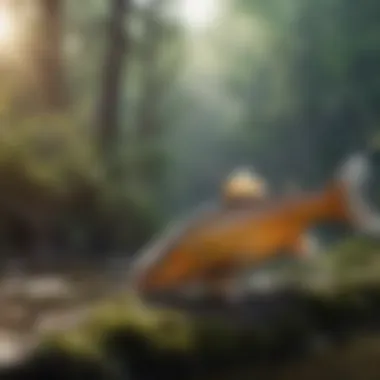
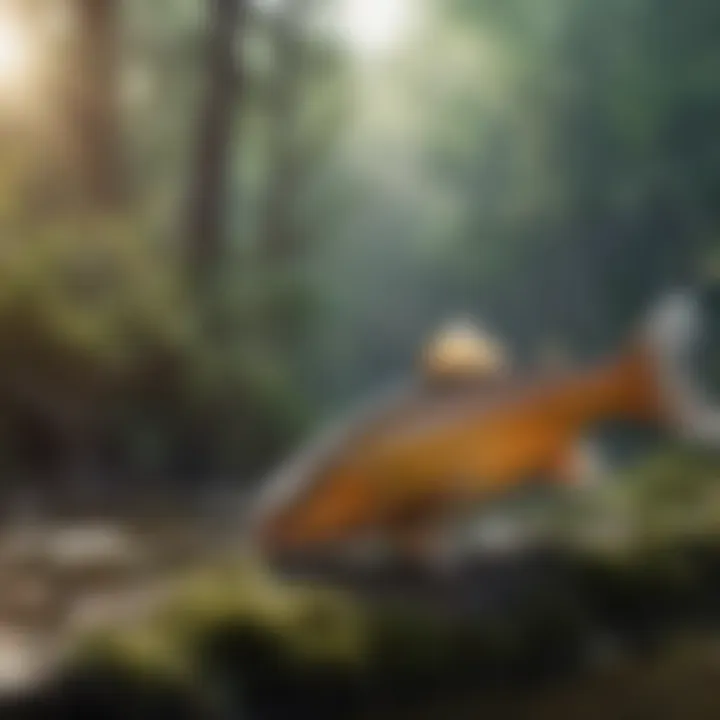
Diminishing biodiversity has far-reaching consequences for ecosystems and, consequently, for fish and game management. The first and foremost concern is the disruption of food webs. If a species goes extinct or its population declines sharply, it can upset the balance between predators and prey, leading to overpopulation or starvation situations.
Some specific impacts include:
- Habitat Degradation: Loss of various species often results in habitats becoming less stable. For example, the decline in certain fish species can lead to a rise in algae blooms, choking waterways and harming aquatic ecosystems.
- Reduced Resilience: Ecosystems with higher biodiversity are typically more resilient to disturbances, whether they come from natural disasters or human activities. Reduced diversity means a weakened ability to recover when something goes awry.
- Economic Consequences: From a socio-economic perspective, lower biodiversity also translates to reduced ecosystem services. This means less effective natural resources for fishing, hunting, and recreational activities, ultimately impacting local economies reliant on these practices.
By keeping a keen eye on biodiversity, fish and game management can not only work towards a balanced natural environment but also safeguard the interests of local communities that depend directly on the robustness of these ecosystems.
Regulatory Frameworks
Regulatory frameworks form the backbone of effective fish and game management. They create a structured approach towards maintaining sustainable populations, protecting ecosystems, and promoting harmonious coexistence between humans and wildlife. These frameworks set the rules of the game, ensuring that both conservation goals and community needs are met. Through a combination of laws, policies, and guidelines, they help establish what practices are permissible and which are not, fostering greater accountability and stewardship among stakeholders.
The relevance of regulatory frameworks in this article cannot be understated. They are not only crucial for enforcing conservation efforts but also for guiding education and raising awareness about the importance of biodiversity. Without these regulations, we might as well be sailing in open waters without a compass.
National Policies and Legislation
National policies regarding fish and game management often serve as the strategic foundation upon which local regulations are built. For example, the Endangered Species Act in the United States lays the groundwork for species protection, guiding states in their local management plans. These policies often incorporate scientific research to adapt to changing ecological conditions and address challenges like overfishing or habitat destruction.
Another critical point is the legal frameworks that accompany international agreements, such as those emerging from the Convention on Biological Diversity. These treaties drive nations to commit to conservation practices, impacting how fish and game are managed at a global scale.
In summary, national legislation often reflects a country's commitment to sustainable resource management and acts as a unifying force for local efforts.
Local Governance Structures
When talking about fish and game management, local governance structures play a critical role in implementing national policies. These structures often consist of local departments and agencies that tailor management efforts to fit their unique ecosystems and demographics. Local authorities are key players; they know their area best and can respond promptly to environmental changes or community concerns.
Moreover, these governance units often collaborate with local communities, promoting participatory approaches. Community input can be invaluable in shaping effective regulations and ensuring that the cultural and social nuances of fishing and hunting practices are respected.
A well-functioning local governance structure can facilitate educational programs, encourage sustainable practices, and even engage in citizen science initiatives. This grassroots involvement can bolster overall effectiveness and foster a sense of ownership among residents.
Sustainable Practices in Fishing
Fishing, when done sustainably, ensures that fish populations thrive and ecosystems remain balanced. As we look at the practice of fishing, we must prioritize sustainability to safeguard the future of our aquatic resources. Sustainable practices in fishing are not merely trends; they are essential for long-term ecological integrity and economic viability. This approach recognizes that fishery stocks are finite and that overexploitation can lead to dire consequences, affecting both biodiversity and local communities dependent on these resources for their livelihoods.
A variety of methods contribute to sustainable fishing. These include strict quotas, seasonal restrictions, and promoting the health of marine environments. Sustainability intertwines with social responsibility; it often involves local communities in decision-making processes. When locals have a stake in their resources, they tend to manage them better. Furthermore, sustainable fishing practices can create economic opportunities for communities through eco-tourism and local markets.
Incorporating sustainability in fishing practices brings multiple benefits:
- Preservation of ecosystems: Healthy fish populations support food webs.
- Economic stability: Sustainable practices lead to viable fish stocks for generations to come.
- Community engagement: Local involvement fosters stewardship and accountability.
Ultimately, sustainable fishing is about striking a balance between the needs of humans and the health of the marine environment.
Catch and Release Strategies
Catch and release strategies, a cornerstone of sustainable fishing, play an essential role in maintaining fish populations. This practice allows anglers to enjoy the pursuit of fishing while minimizing harm to fish stocks. By returning the catch back to its habitat, fishermen contribute to the long-term health of fish species.
However, it’s critical to implement proper techniques during the catch and release process. Fishermen need to keep the fish wet and handle them as little as possible to reduce stress. Using barbless hooks can facilitate an easier release, minimizing injury to the fish. The timing of release is also crucial; fish should spend the least amount of time out of water to allow for recovery. Educating anglers about these best practices fosters a culture of care for aquatic life.
Some anglers might initially question the worth of catch and release, arguing that it diminishes the thrill of fishing. Yet, there's a powerful satisfaction in knowing that you’ve also played a part in environmental stewardship.
Aquaculture: Opportunities and Challenges
Aquaculture presents a mixed bag of possibilities and hurdles. On one side, it stands as a solution to meet the global demand for seafood without further depleting wild fish populations. Fish farming can provide a steady supply of food and create jobs while reducing the pressure on natural stocks. Moreover, aquaculture can focus on species that are underrepresented in wild fisheries, contributing to biodiversity.
Nevertheless, this practice doesn’t come without complications. Poorly managed aquaculture operations can lead to negative environmental impacts, such as water pollution or destruction of marine habitats. The use of antibiotics in fish farming can contribute to antibiotic resistance, posing risks to both fish and humans. Furthermore, the escape of farmed fish into the wild can disrupt local ecosystems.
The key to capitalizing on aquaculture's potential lies in responsible management practices. By adhering to sustainable standards and focusing on ecological impacts, aquaculture can become an important player in the future of food security without sacrificing environmental integrity.
"Sustainable practices in fishing, from catch and release to responsible aquaculture, pave the way for healthier ecosystems and prosperous communities. To truly make a difference, we all must embrace our roles as stewards of the water!"
To summarize, the journey toward sustainable practices in fishing is fraught with challenges, yet filled with promise. Each practice requires diligence, education, and a commitment to respecting nature. By prioritizing sustainable fishing, we ensure the well-being of fish populations and the communities that rely on them.
Game Management Strategies
Game management strategies encompass a wide range of practices aimed at sustaining healthy populations of wildlife while ensuring ethical interactions between humans and the natural world. Such strategies go beyond mere regulation; they serve as a backbone in the delicate web of ecological balance. Understanding the specific elements and benefits inherent to these strategies is essential for all stakeholders involved in conservation efforts.
Hunting Regulations and Ethics
Hunting is often seen as an age-old tradition, yet it is intertwined with a set of regulations designed to promote ethical practices. The core of hunting regulations lies in maintaining wildlife populations at sustainable levels.
- Regulatory Frameworks: Different regions have their specific hunting seasons, bag limits, and methods allowed. These frameworks help ensure that wildlife populations are not over-exploited, promoting a balance between the needs of hunters and the ecological needs of the fauna.
- Ethical Hunting Practices: Beyond regulations, there's a moral aspect involved. Ethical hunters are taught to respect wildlife, the integrity of the hunt, and the environments they engage with. Responsible hunting focuses on ensuring a quick, humane kill and always prioritizes conservation efforts.


"Regulations are not just restrictions; they're the guidelines that help ensure we have fish and game for future generations."
By fostering respect and understanding of wildlife, these regulations help reduce poaching and illegal hunting. Furthermore, ethical hunters can serve as ambassadors for wildlife conservation, often becoming vocal advocates for sustainable practices.
Habitat Restoration Efforts
Habitat restoration is another crucial wing of game management strategies. Without suitable habitats, wildlife cannot thrive, no matter what regulations are in place.
- Understanding Habitat Needs: Different species have varying habitat requirements; some thrive in dense forests, while others prefer marshes or open fields. Restoration projects often involve reintroducing native plants, removing invasive species, and re-engineering landscapes to better suit the local fauna.
- Community Engagement: Successful projects often require the involvement of local communities. When communities are engaged, they become stewards of their environments and are more likely to protect and promote restoration initiatives. Programs that bolster community involvement can lead to increased awareness and shared responsibility in conservation.
- Monitoring and Maintenance: After the initial restoration, continuous monitoring is vital. Ensuring habitats remain conducive for wildlife requires an ongoing commitment from various stakeholders, including government bodies, NGOs, and local communities.
In summary, effective game management strategies, particularly regarding hunting regulations and habitat restoration efforts, play a pivotal role in preserving wildlife and ecological balance. Only through thoughtful regulation and active community involvement can we pave the way for resilient ecosystems that are rich in biodiversity. The future hinges on how well we adopt these measures today.
Technology in Fish and Game Management
Technology plays a pivotal role in shaping the management of fish and game resources, providing tools and techniques that contribute to better conservation practices and informed decision-making. The integration of technology not only enhances monitoring solutions but also improves the efficiency of management strategies. This advancement ultimately promotes sustainable practices within diverse ecosystems and aids in the recovery of stressed populations.
With increasing pressures from climate change and habitat loss, employing technology becomes imperative for ensuring that wildlife populations are monitored accurately and preserved effectively. In this section, we will delve deeply into two significant technological advancements: the use of drones and remote sensing and data analytics in wildlife monitoring.
Use of Drones and Remote Sensing
Drones, or unmanned aerial vehicles (UAVs), have revolutionized the field of wildlife management. Their ability to cover vast areas quickly makes them invaluable for monitoring habitats and assessing game populations.
- Cost-Effective Surveys: Traditional aerial surveys can be quite expensive and time-consuming. Drones provide a cheaper alternative, allowing agencies to gather vital data without breaking the bank.
- Real-Time Data Collection: Equipped with high-definition cameras and thermal imaging technology, drones can capture real-time images and videos. This allows for immediate assessments of wildlife behavior, habitat conditions, and potential threats, making it easier for managers to take timely actions.
- Reduction of Disturbance: Unlike manned aircraft, drones can monitor sensitive areas without causing significant disturbances to the animals, which is crucial for maintaining natural behaviors, especially during critical periods such as breeding or feeding.
- Mapping and Habitat Analysis: Remote sensing capabilities paired with drones can facilitate detailed mapping of habitats, enabling better understanding of landscape changes and geospatial analysis. This can inform habitat restoration efforts and highlight critical areas needing protection.
"The use of drones in wildlife management not only streamlines data collection, but it also opens doors to innovative ways of studying and protecting our natural resources."
Data Analytics in Wildlife Monitoring
As the saying goes, data is king. With advancements in technology, collecting data on fish and game has become easier than ever. Yet, the real challenge lies in analyzing this data effectively to provide actionable insights.
- Informed Decision-Making: Data analytics allows for sophisticated models that predict population trends and habitat usage. With the right analysis, management strategies can be adapted to reflect current conditions and future projections.
- Tracking and Tagging: As techniques in tracking evolve, data analytics provides tools to process signals from GPS collars and tagging devices. Analyzing movement patterns can help in understanding migratory routes and seasonal behaviors, which are crucial for developing sound management practices.
- Resource Allocation: By evaluating data collected from various sources, wildlife managers can optimize resource allocation for conservation efforts. Areas that show signs of decline can be prioritized for intervention, maximizing the impact of limited funding.
- Integration with Citizen Science: Engaging communities through citizen science initiatives allows for broader data collection. When paired with data analytics, this collaboration can yield insights that might be impossible to gather through traditional means alone.
In summary, technology is not merely an adjunct to fish and game management; it has become an integral part of effective resource management. By leveraging drones and data analytics, wildlife managers can enhance their strategies significantly, enabling them to adapt to the ever-changing challenges posed by nature and human influences. Understanding these trends and integrating them into management practices is vital for the future of conservation efforts.
Community Involvement and Education
Community involvement and education are pivotal components in the fabric of effective fish and game management. These elements not only empower local populations but also ensure that management practices are both sustainable and culturally relevant. By engaging communities in the stewardship of their natural resources, we can enhance both conservation efforts and ecological literacy among the public.
Role of Local Communities
Local communities play a fundamental role in the success of fish and game management strategies. When communities participate in decision-making processes regarding natural resource management, they bring unique perspectives and invaluable local knowledge to the table. This often leads to more effective and adaptive management practices.
For instance, indigenous groups have historically utilized and preserved local ecosystems long before modern management practices were established. Their traditional ecological knowledge can inform contemporary strategies. Understanding specific local fish migration patterns or wildlife breeding habits can tremendously influence regulatory measures, which may not have been apparent to outsiders.
Moreover, when communities are involved in fish and game management, they tend to take ownership of conservation efforts. It cultivates a sense of responsibility among residents, making them more likely to follow regulations and actively contribute to monitoring initiatives. In Pennsylvania, for example, the collaboration between local hunters and wildlife agencies has significantly reduced poaching incidents, illustrating the effectiveness of community involvement.
Educational Programs and Workshops
Educational programs and workshops serve as the backbone of community engagement in fish and game management. They can enlighten participants about local ecology, the importance of sustainable practices, and the legal frameworks governing fish and game resources. This form of education is essential in cultivating a conservation-minded citizenry.
Tailored workshops that discuss the ecology of local species, habitat restoration techniques, and the significance of biodiversity can help bridge the gap between science and the general public. For instance, a workshop focused on stream conservation in Oregon not only educated attendees about aquatic ecosystems but also empowered them to participate in local clean-up efforts.
The collaboration between conservation organizations and educational institutions can further enhance these workshops. They can create a curriculum that includes hands-on training, which could involve citizen science projects, like monitoring fish populations or conducting bird surveys. This approach not only involves participants in active learning but also enriches regional biodiversity databases, providing valuable data back to managers.
"Understanding local ecosystems isn't just for scientists—everyone has a role to play."
In the long haul, effective educational initiatives foster a culture of conservation, enabling communities to respond more adeptly to challenges such as climate change and habitat degradation. The aim isn’t just to educate, but to inspire a deep-rooted commitment to safeguarding fish and game resources for future generations.
In summary, the synergy of community involvement and educational initiatives lays a strong foundation for ongoing sustainable fish and game management. Emphasizing local knowledge and cultural relevance, strategies can adapt to changing environmental conditions while fostering stewardship among residents. This collaborative approach ultimately benefits both the biodiversity in our ecosystems and the communities that depend on these resources.
Economic Implications of Fish and Game Resources
Understanding the economic implications of fish and game resources is crucial for both local communities and policy-makers alike. These resources often stand at the intersection of conservation and economic development. On one hand, well-managed fish and game populations can drive vital income streams; on the other, mismanagement can lead to ecological degradation that jeopardizes those very economies.
Local economies often rely heavily on the revenues generated from fishing and hunting activities. This includes not only direct income from licenses and permits but also indirect economic benefits such as tourism, hospitality, and retail sales. An active fishing or hunting season can spark a local economic boom, bringing tourists into small towns and communities. Think about it: the sights and sounds of a bustling marina or a local hunting lodge, all contributing to a vibrant local culture and a healthy economy.
Impact on Local Economies
The influence of fish and game resources on local economies cannot be overstated. Here are some key points:
- Businesses Thriving: Local businesses, from bait shops to restaurants, often see a spike in demand when fish and game seasons hit their peak. These seasonal influxes create jobs, spur investments, and enhance overall community welfare.
- Tourism Attraction: Regions rich in fish and game resources often attract tourists looking for recreational opportunities. This tourism not only generates revenue but also helps with the preservation of local habitats as communities rally to protect their natural resources.
- Job Creation: Consider the myriad jobs created by this sector, including guides, wildlife biologists, and research scientists. These roles are crucial in managing and sustaining fish and game populations while also providing livelihoods for many.
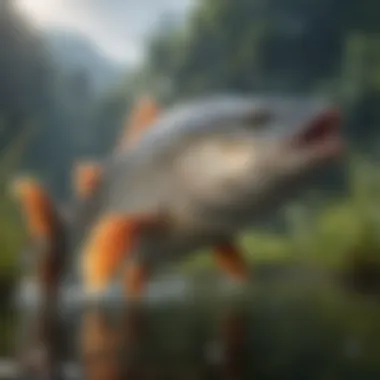
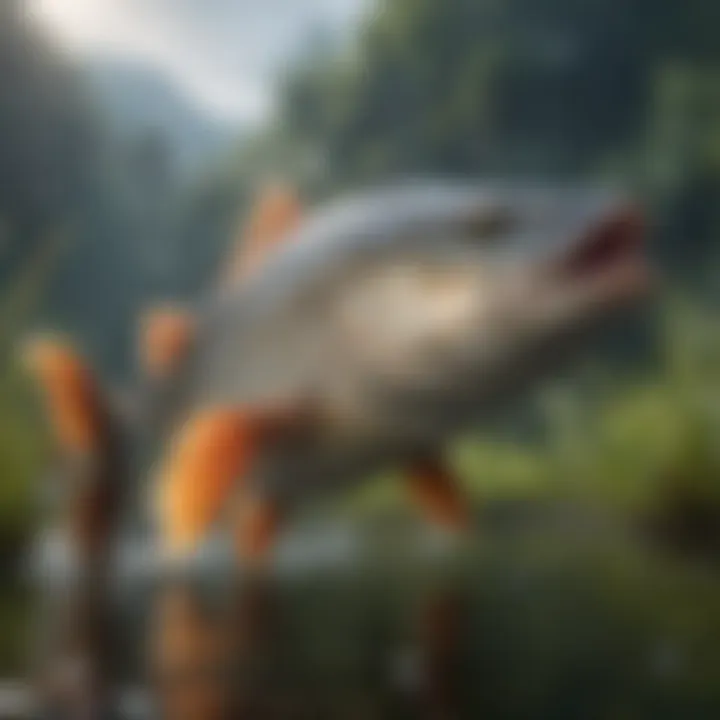
"A healthy fish and game sector not only contributes to local economies but also fosters community pride and sustainable practices."
Balancing Conservation and Economic Needs
Finding the balance between conservation efforts and economic realities poses unique challenges. It’s essential to ensure that decision-making processes take into account the socio-economic fabric of local communities while also maintaining ecological integrity. Here are several strategies that communities might use:
- Sustainable Practices: Implementing sustainable fishing and hunting practices can help ensure that natural resources are preserved for future generations. This includes catch limits and habitat preservation which ultimately support economic longevity.
- Collaborative Approaches: Engaging local stakeholders in management discussions can yield unexpected results. By piecing together knowledge from community members, conservationists, and scientists, more effective and balanced solutions can be established.
- Economic Diversification: Communities dependent solely on fish and game resources may need to diversify their economic activities. This reduces vulnerability to fluctuations in fish and game populations and encourages a more balanced ecosystem and economy.
- Incentivizing Conservation: Policies that incentivize conservation efforts, such as tax breaks for those engaging in eco-friendly practices, can align both economic and conservation goals. This offers a win-win scenario, benefiting the environment while fostering economic growth.
In summary, the economic implications of fish and game resources are multi-faceted and warrant serious consideration in decision-making processes. By recognizing that sustainable practices can yield substantial economic benefits, communities are better positioned to support both human and ecological needs.
Challenges Facing Fish and Game Management
Fish and game management plays a vital role in maintaining ecological balance and preserving biodiversity. However, this field is riddled with challenges that threaten its effectiveness. Understanding these challenges is crucial not only for conservationists but also for policy makers, educators, and local communities impacting resource management. The evolving interactions between diverse species, human activities and global climate patterns shape the complexities these practitioners face.
Climate Change Impacts
Climate change is knocking on all doors, and fish and game management is no exception. Temperature shifts, changing precipitation patterns, and rising sea levels can drastically change habitats, making conditions less favorable for certain species. For instance, a region that once thrived with trout may find itself struggling as water temperatures inch upward, causing many fish to relocate or die off.
- Warmer waters can reduce oxygen levels, impacting fish health and spawning cycles.
- Increased flooding and storm intensity may disrupt wildlife habitats and migration routes.
- Changes in vegetation patterns can affect food sources for both fish and game.
The ripple effects can often be felt in local economies that depend on these resources for recreation and subsistence. Managing these changes requires adaptability and innovative strategies to foster resilience within ecosystems. This isn't merely a matter of reacting to changes but requires proactive planning and collaboration among stakeholders at every step.
"The greatest threat to our planet is the belief that someone else will save it." — Robert Swan
Invasive Species Threats
The threat of invasive species looms large over effective fish and game management. Non-native species often arrive with no natural predators to keep their populations in check, leading to ecological imbalance. For example, the introduction of zebra mussels in freshwater systems across North America has wreaked havoc on aquatic ecosystems, devastating local wildlife by outcompeting them for food and habitat.
Key concerns regarding invasive species include:
- Competition for Resources: Invasive species may outcompete native species for food, water, and shelter, potentially leading to population declines.
- Altered Ecosystems: Changes in the balance of existing species can lead to fewer biodiversity hotspots, negatively affecting local fish and game populations.
- Economic Costs: Managing and controlling invasive species incurs significant expenditure and effort, diverting resources from essential management practices.
By fostering awareness and encouraging local participation in monitoring programs, communities can play a crucial role in preventing and managing invasive species. Collaborative efforts among biologists, lawmakers, and the public are essential to develop informed strategies that tackle these complex challenges effectively.
Ultimately, facing the challenges of climate change and invasive species demands innovation, education, and cooperative action. Only through thoughtful engagement with these critical issues can we pave the way for sustainable fish and game management.
Future Directions in Fish and Game Management
The landscape of fish and game management is evolving. Looking ahead, it is paramount to understand how emerging strategies and methodologies can interface with traditional practices to enhance sustainability. As challenges grow in complexity—driven by climate change, habitat destruction, and shifts in societal values—the need for innovative and adaptive management practices becomes a pressing concern. This section explores crucial aspects that could shape future practices, as well as the underlying principles guiding these directions.
Innovative Management Approaches
Staying ahead requires a willingness to embrace creativity in management practices. New technologies and techniques are surfacing that promise to revolutionize how we think about resource management. Here are some noteworthy examples that could redefine our strategies:
- Integration of Technology: Tools like GPS tracking and satellite imagery have made it feasible to monitor wildlife populations and their movements more accurately than before. These technologies can offer insights into behaviors that were once difficult to study.
- Community-Based Management: Empowers local communities to participate actively in management practices. This participatory approach acknowledges that those who live closest to these resources often have valuable knowledge and vested interest in their sustainability.
- Adaptive Management Models: These are flexible frameworks that allow for adjustments based on changing conditions and new information. Such models can lead to more effective responses to environmental fluctuations.
- Ecosystem-Based Approaches: This strategy recognizes the interconnectedness of species and their habitats. By managing ecosystems holistically, rather than focusing solely on individual species, we can foster resilience and biodiversity.
"Innovative management is not about completely reinventing the wheel; sometimes it’s just about balancing the old with the new."
Each of these methods presents distinct benefits, such as enhanced responsiveness to environmental changes, broader stakeholder engagement, and more effective biodiversity conservation.
Long-term Sustainability Goals
Establishing long-term sustainability goals is crucial for the future of fish and game management. Unlike reactive approaches, a proactive stance ensures that resources are preserved not just for today, but for generations to come. Key considerations include:
- Sustainable Harvesting Practices: Crucial for ensuring populations remain dynamic and viable. Setting quotas based on scientific research ensures that fish and game can be enjoyed without risk of depletion.
- Restoration Initiatives: Focusing on restoring habitats that have been degraded over time can help revive fish and game populations. Efforts such as reforestation and wetland restoration play vital roles in this regard.
- Education and Awareness: Increasing awareness among the public about the importance of biodiversity and conservation can shift perspectives and motivate altruistic behaviors. Long-term engagement will cultivate an appreciation for natural resources.
- Collaboration Across Borders: Natural habitats often span multiple jurisdictions. Collaborative conservation approaches across states and countries can amplify the effectiveness of management strategies.
The intertwining of these goals and approaches provides a framework for a future where sustainability is not just a lofty ideal but a practical reality.
In essence, the future directions in fish and game management hinge on incorporating innovative techniques, fostering collaboration, and prioritizing long-term sustainability objectives. A strategic vision that integrates technology and community participation can transform the management landscape, creating a more responsive and resilient system.
Closure
The conclusion of this article serves as a pivotal component, synthesizing the myriad elements intertwined in fish and game management. This section highlights the significance of understanding the complexities involved in balancing ecological integrity with human interests. Fish and game management is not merely about the allocation of resources; it represents a holistic approach that weaves together sustainability, economic factors, and biodiversity conservation.
Synthesis of Key Insights
To draw threads from the earlier sections, fish and game management emphasizes several key insights:
- Interconnectedness: The relationships between species, their habitats, and human activities are intricate. By recognizing these connections, conservation efforts can be more effective.
- Sustainability as a Core Principle: Innovative practices, such as catch and release strategies and habitat restoration, are not just optional but essential for the longevity of fish and game populations. Without sustainable practices, the resilience of ecosystems drastically diminishes.
- Community Engagement: Local communities play a crucial role in conservation, demonstrating that grassroots movements can unite efforts in preservation. Education and local stewardship foster a sense of responsibility towards natural resources.
"In understanding the dynamics of fish and game management, one realizes that conservation is an ongoing dialogue, shaped by numerous voices and perspectives."
The Role of Stakeholders
The various stakeholders involved in fish and game management range widely in their motivations and interests, creating an intricate web of interactions:
- Government Agencies: These organizations craft regulations that ensure a balance between resource use and preservation. Their role is not only administrative but also educational, guiding public perception and practices.
- Conservation Groups: These entities advocate for sustainable practices and often provide critical data and research to inform policies. Their findings can shape management strategies and enhance the collective understanding of ecological processes.
- Local Communities: They are directly affected by management decisions. Involving them fosters engagement and respect for wildlife. Often, their traditional knowledge can offer insights that benefit scientific understanding.
- Researchers and Academics: This group contributes to the body of knowledge that supports effective management strategies. Their studies can reveal trends and impacts that are crucial for adaptive management approaches.
Recognizing the roles of these stakeholders demonstrates that effective fish and game management cannot occur in isolation. Collaborative efforts, encompassing diverse perspectives and expertise, are vital for developing robust strategies that serve ecological needs alongside human aspirations.



